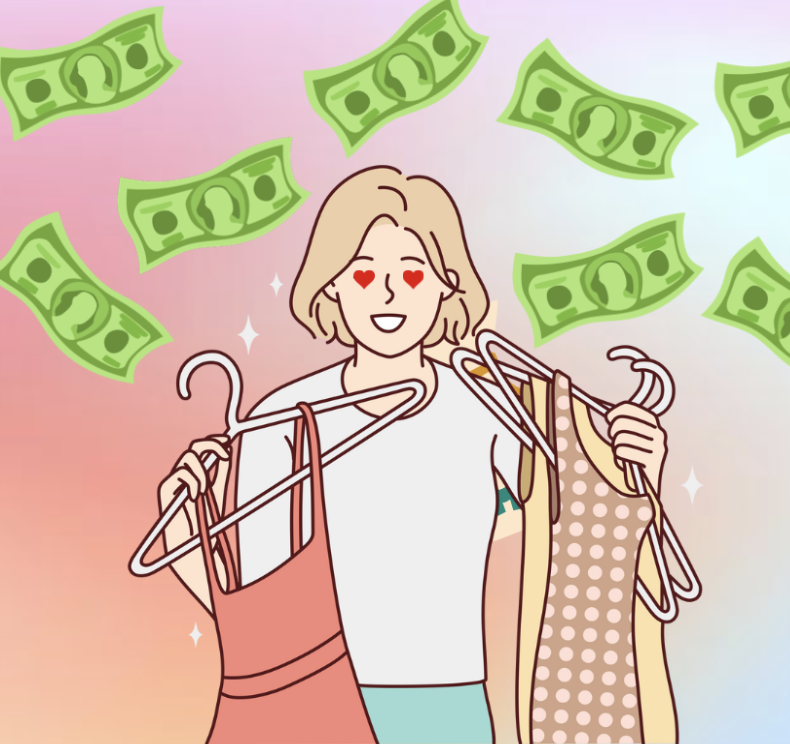Gentrification: Why almost nothing in Goodwill is less than $10
Graphic made by Felicity Whidden with Canva
Thrifting may be more popular than ever, but does that come with an increase in price for those who need it most?
January 18, 2023
Seen as a noble response to the environmentally-catastrophic fast fashion industry, the act of thrifting seems to justifiably claim the moral high ground. But perhaps the celebration is a bit premature; maybe we’ve traded one evil for another. Instead of nylon and polyester, this evil has cloaked itself in gentrification.
Depop culture. Where Saturday morning “thrift runs” with friends is a scavenger hunt for soon-to-be vintage, y2k, and rare pieces to resell. Now, don’t get me wrong, these thrifting expeditions may be a harmless attempt to get some fast money, but up-charging a ten-dollar sweater seven hundred percent is doing more harm (and no, not just to your wallet) than these Depop sellers may be aware of.
Goodwill, and in my opinion, the most popular thrift store, has been a resource for decades, aiding underprivileged communities with a wide selection of pieces that won’t break the bank. From sweaters to strainers to sewing machines, disadvantaged communities worldwide found ease when looking at these price tags.
But, in recent years, as more and more teenagers flocked to these blue-signed buildings, Goodwill quickly noticed their newfound audience, and despite their excellent pricing reputation, they raised their prices. A lot. According to the 2022 Sales Report by ThredUp, an online thrift store where users can send in their donated clothes, the secondhand apparel market was worth about $28 billion in 2019, and experts have projected these numbers to reach $82 billion in 2026. While secondhand fashion is skyrocketing, it is not in the environmentally friendly way it should be.
The bigger problem, though, is not the increase in secondhand sales. The problem is the people who overflow the stores with hundreds of dollars in their pockets, carts loaded with garments, and phones ready to resell these newly acquired pieces at ridiculous prices. And yes, I have also seen this firsthand in many a TikTok. Not only are these pieces no longer available to a disadvantaged buyer, but each garment is now in possession of someone well-off and able to spend the soon-to-be ridiculous amount.
In an article by Terry Nguyen, How Thrifting Became Problematic, she writes that “These young consumers (on Depop) might have minimal knowledge to help discern true vintage items from the mounds of thrifted clothes on Depop, and as a result could be paying well-above-average prices for items that aren’t really that special.” I myself have used Depop to find affordable pieces, but recently, my experience on this app has been clouded with overpriced sweaters, Gymboree shirts (no, I am not joking), and worn-out jeans.
Immediately reselling these pieces defeats the true purpose of secondhand fashion and the problems of textile waste. Jennifer Lezotte, author of From Goodwill to Grunge: A History of Secondhand Styles and Alternative Economies, wrote, “The idea is that you’re giving it (the donated garment) to someone who otherwise wouldn’t be able to buy” versus a wealthier teenager looking to capitalize. Because of this, “the equation doesn’t work out anymore.”
So, while I may not be shopping on Depop for a while, in the future I would hope my package comes from that person’s closet and not their cart. And maybe, just maybe, Goodwill prices can go back to normal.








J • Jan 24, 2023 at 9:08 pm
So it turns out that capitalism ruins even its own attempts to fix its failures.